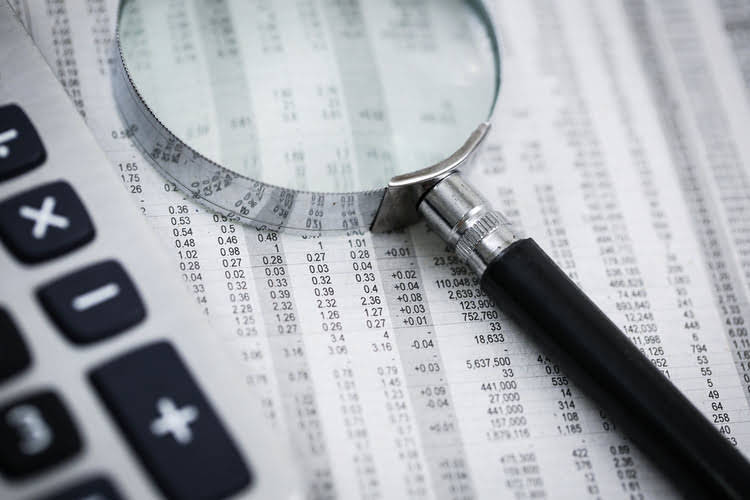
Pacioli met Da Vinci in Milan in 1496, where he was brought to teach a court—which included Da Vinci himself. The two men quickly became close friends and bonded over their shared passions for mathematics and the arts. Luca Pacioli was born in 1445, in a town called Sansepolcro—which was located in what we now know as Tuscany, Italy. Eager to pursue his education in arithmetic and mathematics, Pacioli moved to Venice at a young age to work in the service of a wealthy, Venetian merchant.

Impact on accounting and business
- It was small enough to make it possible for businesses to buy them and this led to accountants being among the first to use them.
- Understanding the history of accounting is essential in appreciating the profession’s current state and its future potential.
- Luca Pacioli’s most notable accounting book is titled “Summa de Arithmetica, Geometria, Proportioni et Proportionalita” or simply “Summa” in short.
- Pacioli’s book explained the Hindu-Arabic numerals, new developments in mathematics, and the system of double-entry was popular with the increasingly influential merchant class.
- Around the first millennium the Phoenicians invented an alphabetic system for bookkeeping, while the ancient Egyptians may have even assigned someone the role of comptroller.
- The Sarbanes-Oxley Act of 2022, which reformed corporate financial practices, was a response to the Enron scandal.
- If you’re a small business owner, you likely understand the important role that accurate accounting plays in running a business, or depending on your background—you may even be familiar with how it’s done.
Also, Guidobaldo, the Duke of Urbino, appointed Pacioli as the court mathematician, acknowledging his contributions to the field. Another key contemporary that Pacioli encountered during his lifetime was the renowned Italian painter and mathematician, Piero della Francesca. Born in Tuscany, della Francesca was an expert in perspective and geometry, which eventually influenced Pacioli’s later work. One of Pacioli’s significant contributions to mathematics is his work on the Golden Ratio. In his treatise titled Divina proportione, he defined this aesthetically pleasing ratio as the division of a line so that Food Truck Accounting the shorter part is to the longer as the longer is to the whole (approximately 8 to 13). This ratio fascinated both artists and mathematicians during the Renaissance era.
- The Business Research Company reports that the market size of the global accounting services industry was nearly $588 billion in 2021 and projects that it will increase to $1.7 trillion by 2031.
- While the practice may have begun centuries earlier, accounting’s first official records are tax information on clay tablets from around 3300 B.C.
- The Tang dynasty expanded their maritime presence across the Indian Ocean, Persian Gulf, and Red Sea, and up the Euphrates River.21 On land they conquered much of what is today’s China.
- As these ancient societies built more complex civilizations, the need to conduct simple arithmetic, writing, and trade emerged.
- This time frame includes two key shifts in business, with the industrial revolution moving much of the world to a manufacturing-based economy and the emergence of joint-stock companies bringing multiple business shareholders to the table.
- Business owners didn’t need professional accountants to create complex financial statements or cost-benefit analyses.
Original records (journal and subdivision of journal):

Understanding his role in accounting history is important for understanding Western history and the way in which the economy functions today. He was a merchant, an economist, a scientist, and a diplomat from what was then the Republic of Ragusa. accountancy Although historians haven’t uncovered a record of accounting practices during this time, they point to the first exchange of goods or services as the likely start of some form of record keeping. This period lasted until 1494, with the publication of the first book to describe double-entry accounting, a system using debit and credit entries. Some of the earliest known writings discovered by archaeologists are accounts of ancient tax records on clay tablets from Egypt and Mesopotamia dating back as early as 3300 to 2000 BCE. Historians hypothesize that the primary reason for the development of writing systems came out of a need to record trade and business transactions.
Summary (profit and loss account and balance sheet):
- Besides his significant contributions to accounting, Pacioli was a mathematician, and his works encompassed various mathematical fields, including arithmetic, geometry, and proportions.
- Blockchain technology provides a decentralized ledger that can be used to track financial transactions securely.
- This system involved recording transactions in a journal and then transferring them to a ledger to ensure accuracy.
- Additionally, his book “Summa” played a critical role in disseminating mathematical knowledge and influenced future generations of mathematicians andaccountants.
Modern CPA firms help businesses comply with financial regulations and accounting standards and provide valuable insights that help businesses make informed decisions. Roman merchants used a bookkeeping system involving a board covered in wax where transactions were recorded using a stylus. The Romans used bookkeeping to keep track of debts and credits and the movement of goods between different regions of the Roman Empire.

- The Kautilya system laid the foundation for modern accounting practices in India and other parts of the world.
- Around this time, historians believe, Egyptians were also using accounting to monitor their pharaoh’s possessions and uncover fraud.
- In fact, it may be that the first such tablets were impressions of the tokens themselves, pressing the hard clay baubles into the soft clay tablet.
- Sumerians in Mesopotamia, Babylonians, and the ancient Egyptians recognized the need for counting and measuring the results of labor and effort.
Much of Pacioli’s work in mathematics was not original or unique, but his writings had a large influence in Italy, allowing for information that was formerly the possession merely of the elite to be disseminated among the general populace. Pacioli died in 1517, the same year that Martin Luther’s 95 Theses in Germany would help spark the Protestant Reformation. A financial forecast tries to predict what your business will look like (financially) in the future—which is key for uncertain, economic times. Bad debt is how your business keeps track of money it can’t collect from customers.

Italian monk Luca Pacioli revamped the common bookkeeping structure as part of the tradition of learned monks conducting high-level scientific and philosophical research in the 15th century. Commonly known as “the father of accounting,” he published a textbook called “Summa de Arithmetica, Geometria, Proportioni et Proportionalita” in 1494. Introduced in 1978, VisiCalc was the first spreadsheet software to allow financial modeling on the computer. That same year saw Peachtree Software launch an accounting software package for the personal computer. These developments, along with the 1998 introduction of QuickBooks for day-to-day bookkeeping, made financial accounting tasks easier to perform retained earnings than relying on mainframe computers.
